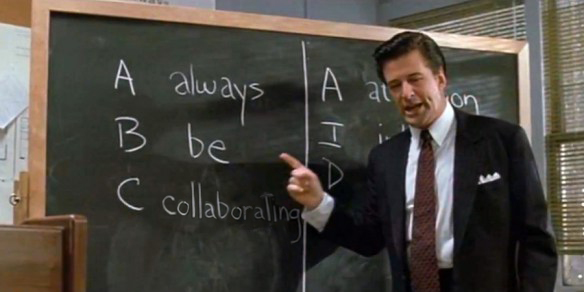Finding the awkward bits in sales
In recent weeks, I’ve been working with clients who have been getting into the weeds on their sales process. They are doing the right things. They are holding themselves accountable and recording where potential deals are stalling and pulling out the trends.
In one particular instance, we’ve identified a clear area of weaknesses. This company has identified the correct people (or more accurately, profiles that are good initial contacts). Their business proposition is compelling. The typical objections are both known and are accompanied with the reasons why the potential gain far outweighs the perceived pain of instigating change. This is all proper stuff.
But the bit they recognise they struggle with comes towards the end of the first call of substance. When the conversation shifts from quantifying the issue to what could/should happen next, it all gets a bit vague. The part of the call we would normally call ‘the close.’
Well, I’m here to say the concept of closing is in itself the problem.
Always be closing? Really?
We know the old school sales world is best left in the past. The days of just pushing sales messages and battering the prospects into submission are long gone. The sheer inefficiency of a dial and smile approach makes my teeth itch.
The old school sales world is famously captured in Glengarry Glen Ross and the associated memes of coffee is for closers.


Book now to give your business a health check
Our health check will shine a torch around the inside of your sales and marketing set up.
We will identify frictions and highlight what support would help.
Beware of the friendzone
So at one end of the spectrum, we have the super slick sales person. It would be easy to think that the solution is just to run away as fast and as far as we can, right?
Well, beware the pitfalls of going too far the other way. At the extreme opposite of the Glengarry crew, we find the relationship builder. This person would likely squirm at the very moniker of ‘sales’ and instead spends their own time gaining favour with the prospect without ever highlighting client pain and why there is a need to change from the status quo. The relationship builder is in the friendzone.

If it is not closing, what is it?
We’ve established we don’t want to be forcing our agenda and feature spamming the prospect. Equally, we don’t want to have a series of warm fuzzy conversations that don’t lead to any business.
And to make things harder, in today’s B2B sales convincing one person (your prospect) isn’t enough. We live in age of decision by consensus. This has been famously captured by Gartner over the years with their B2B insights reports where the average headcount in the decision has been steadily rising through years and now sits at between 6 and 10 people.
So what is the way through? Stop. Collaborate. And Listen (sorry about that one).

If it is not closing, what is it?
Instead of thinking of it as a sales close, think of it as transitioning to sales collaboration.
Sales should not be seen as an adversarial process. Instead, this is about teaming up with the prospect and getting your newly formed shared alliance put to the rest of the business. You and your prospect are now on the same team and together you are going to convince the remaining stakeholders this is the right thing for the business to do. Next stop is the CFO’s office.
OK this all sounds cute but, what does it actually mean in practice?
Simple, swap out the sales closing questions for sales collaboration questions.
- What business priority are we solving here?
- Who else will need to support this for it to happen?
- What could we do together so they view this as a good initiative?
- What is the first thing they will ask about this?
- Would you like us to create the presentation with you?
- What facts and figures could we prepare that would help the case?
- When is the next time those people all meet?
- How helpful would it be if we were in that meeting?
For this to work, there needs to be a mindset shift from the sales person. Our task is not to close down the client. Our role is to collaborate with them and help get your newly shared agenda around the remainder of the business.
In today’s sales, put the coffee down, it pays to always be collaborating.

